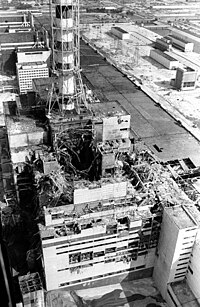
Photo from wikipedia
In this lab-scale study, the POCIS capacity to integrate short contamination peaks of variable intensity and duration was evaluated. POCIS were immersed for 14 days in tanks filled with tap water… Click to show full abstract
In this lab-scale study, the POCIS capacity to integrate short contamination peaks of variable intensity and duration was evaluated. POCIS were immersed for 14 days in tanks filled with tap water and spiked at different concentrations with 12 pesticides of various polarities (log Kow = 1.1–4.7) and classes (herbicides, fungicides, and insecticides). Concentrations were kept relatively constant at 1 μg L−1 and 5 μg L−1, respectively, in two “background” exposure tanks. Three contamination peaks of increasing intensity and decreasing duration were simulated (10 μg L−1 for 24 h, 40 μg L−1 for 6 h, and 60 μg L−1 for 1 h). This lab-scale study demonstrated that ten moderately polar compounds (2 < log Kow < 4) showed a linear uptake, as observed in previous studies, while a non-linear model fits the data of the two most polar pesticides (log Kow < 2). Depending on chemical polarity, some compounds exhibited a “burst effect” or “lag effect” during the first 3 days of exposure. After 14 days of exposure, contamination peaks appeared integrated for seven compounds, showing the ability of POCIS to catch very short pollution events and to provide acceptable time-weighted average concentration estimates under laboratory-controlled conditions.
Journal Title: Environmental Science and Pollution Research
Year Published: 2018
Link to full text (if available)
Share on Social Media: Sign Up to like & get
recommendations!